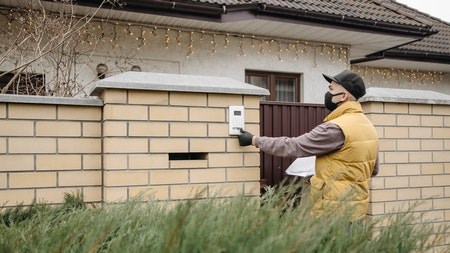The tragic case heard in the North West Division of the High Court in April, whereby a landlord of a holiday chalet was found liable for damages to a family who lost their child to a freak flood while holidaying on his property, is a strong reminder to all landlords to relook their lease agreements and consult with legal experts to ensure they are as protected as they can be under the law.
‘Protected as they can be’ is a crucially key statement because although a lease agreement will include certain indemnities, there is no blanket indemnity that can completely absolve a landlord of all liability should an injury or death manifest. Common law obligations may often come into play, which dictates that landlords have certain obligations that can never be completely avoided.
To clarify this is Andre van Breda, Senior Associate at Minde Schapiro & Smith Incorporated.
The basic principle is that a landlord has a duty to deliver and maintain a property in a condition that is reasonably fit for the purpose for which it has been let.
"This includes that a lessee is not exposed to unnecessary risk to life and safety.”
Generically, this relates to what is considered to be ‘reasonable risk’, in other words, the risks that relate to features within the property that require maintenance or repair, and for which the landlord is responsible. Should any unfortunate incident occur that impacts the safety of a tenant, the lease agreement is the point of departure, which accords the landlord the first line of ‘conditional’ protection. Lease agreements should therefore be drafted in such a way that the duties of each party are clarified.
Maintenance to mitigate risks
Conditional in this sense means the landlord has, as per the lease agreement, undertaken maintenance and repair of the property, which play a role in mitigating risks. Van Breda provides an example. “A safety railing up the stairs of a double storey house has not been properly maintained and gives way when a tenant leans against it. The landlord could be held liable for loss or injury if found that he/she has not undertaken regular maintenance to ensure that railing components such as wood, metal bolts or screws, that weaken over time, have not been replaced or repaired when needed.”
Two scenarios now present themselves. “If the tenant is injured or suffers a loss, it may open the landlord up to damages liability, but there is no obligation to open a criminal case. However, should a death occur due to a lack of maintenance (which if proved would be a breach of the contract) an inquest docket will be opened by the police, and investigation will follow,” says van Breda. “In such circumstances, a landlord could be found liable for negligence that resulted in the death of the tenant, and the state will then institute criminal proceedings.”
It is obvious therefore that maintenance is crucial, but what of the unknowns or freak incidences that may turn the lens onto a landlord? Van Breda says it is exceptionally difficult to advise what would be considered sufficient clauses to insert in a lease agreement that serves to protect a landlord as each incident would be considered separately. There can, for example, be no set clause to cover a landlord in the case of a flood.
“Lease agreements should not be generic agreements obtained from the internet or elsewhere, or which are advertised as ‘one size fits all’ templates,” he says. “You cannot apply a lease agreement for a freestanding home in a secure estate to that of an apartment, and similarly you cannot assume that a free-standing home lease agreement applies to all free-standing homes because there are innumerable variations at play.”
Each property and its circumstances require tailormade clauses. Examples that require specific attention can be anything from a home having a pool, a thatch roof, a jungle gym, or an electric fence. And for each of these variables, there may be specific maintenance requirements placed on the landlord.
Regardless of whether clauses relate to specific maintenance or not, van Breda says that landlords should undertake regular maintenance … “at least upon the moving out of a tenant, and thereafter ensuring that relative records are kept for the next tenant. Further effort can be made to obtain electrical and plumbing certificates to prove compliance.”
Ideally, and to ensure the best possible protection, a bespoke agreement should be drawn up by attorneys, but they can only work with the information provided. Accordingly, the onus is on the landlord to ensure that the relevant information is disclosed to ensure best possible accuracy when drafting the lease agreement.”
Agents beware
Agents have a duty to convey facts concerning a property that they are marketing to potential tenants as well. Obviously, this relates to those facts they are aware of. “More often than not, the owner mandates an agent to conduct necessary inspections of a property, and which mostly includes at least the tenant ingoing and outgoing inspections,” says van Breda. “If the agent, during such inspection, finds the property to be unsafe, or becomes aware of a patent defect (that being clearly visible defects), the agent has a common law duty, as well as in terms of the Estate Agent’s Code of Conduct, to disclose those facts to both the prospective tenant and the owner.
“Should it be found that an agent knew, or ought to have known, of such defects or circumstances rendering a property unsafe, and withheld such information, an agent can be found liable in their personal capacity.
“Provided an agent discloses the defect to both tenant and landlord, the agent absolves him- or herself from liability,” confirms van Breda. “Should the tenant accept the defect and remain on the property with a lease in place and/or should the landlord simply ignore his or her duty to repair and maintain, the liability then rests between the landlord and tenant.”
Notices and warning signs
Regardless of a specific danger being disclosed in a lease agreement, signs should be prominently displayed, in plain and simple English, to warn tenants of such specific dangers, for example, wild animals or flood lines. A generic disclaimer, be that visual or in the lease agreement is also not always sufficient … the landlord and agent must verbally warn tenants of the danger, and the landlord is obliged to have taken reasonable steps to mitigate those dangers as far as is reasonably possible.




